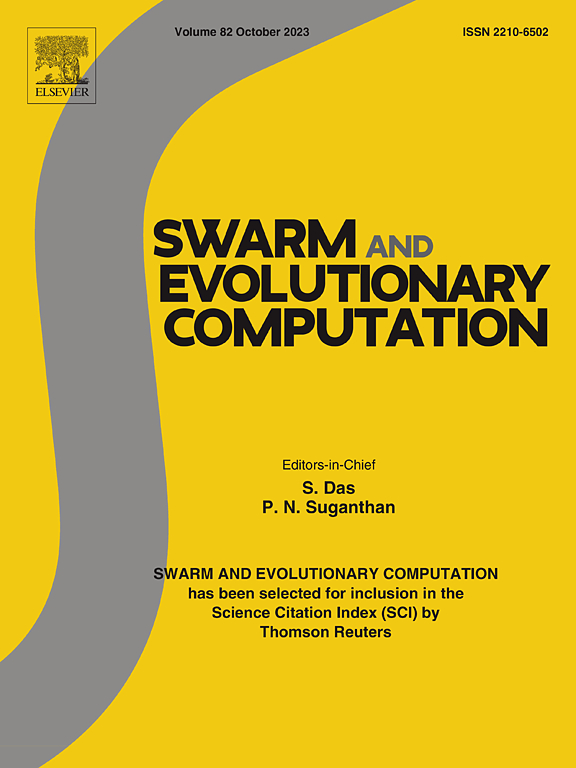An improved NSGA-II algorithm based on reinforcement learning for aircraft moving assembly line integration optimization problem
IF 8.2
1区 计算机科学
Q1 COMPUTER SCIENCE, ARTIFICIAL INTELLIGENCE
引用次数: 0
Abstract
In the aircraft moving assembly line, the focus of the assembly line balancing problem is to balance the workload in each workstation, the scheduling of aircraft assembly lines must consider the parallel relationship between assembly tasks and meet supply constraints. The aircraft moving assembly line integration optimization problem integrates the aircraft assembly line balancing problem with the aircraft assembly line scheduling problem to enhance aircraft assembly efficiency. The decision involves allocating all assembly tasks to a given number of workstations, auxiliary decisions pertain to determining the start times for assembly operations and the number of operators required. The objective is to minimize the cycle time and smoothness of the assembly line while ensuring that the number of workers on the assembly line is minimized. An integer linear programming model has been established to solve the aircraft moving assembly line integration optimization problem, and a new decoding method has been designed for this problem. A Bayesian reinforcement learning-improved NSGA-II algorithm (RLINSGA-II) has been proposed. After non-dominated sorting, the population is hierarchically divided, and a selection strategy is established among individuals of different levels. Through Bayesian reinforcement learning formulas, the selection strategy undergoes continuous adjustment throughout the population iteration process, thereby enhancing the quality of offspring individuals produced by the crossover operator. Finally, five test cases of different scales were designed based on actual cases, and the proposed RLINSGA-II was compared with five multi-objective optimization algorithms. Computational experiments and a real case study reveal the superiority of our proposed approach.
求助全文
约1分钟内获得全文
求助全文
来源期刊

Swarm and Evolutionary Computation
COMPUTER SCIENCE, ARTIFICIAL INTELLIGENCEC-COMPUTER SCIENCE, THEORY & METHODS
CiteScore
16.00
自引率
12.00%
发文量
169
期刊介绍:
Swarm and Evolutionary Computation is a pioneering peer-reviewed journal focused on the latest research and advancements in nature-inspired intelligent computation using swarm and evolutionary algorithms. It covers theoretical, experimental, and practical aspects of these paradigms and their hybrids, promoting interdisciplinary research. The journal prioritizes the publication of high-quality, original articles that push the boundaries of evolutionary computation and swarm intelligence. Additionally, it welcomes survey papers on current topics and novel applications. Topics of interest include but are not limited to: Genetic Algorithms, and Genetic Programming, Evolution Strategies, and Evolutionary Programming, Differential Evolution, Artificial Immune Systems, Particle Swarms, Ant Colony, Bacterial Foraging, Artificial Bees, Fireflies Algorithm, Harmony Search, Artificial Life, Digital Organisms, Estimation of Distribution Algorithms, Stochastic Diffusion Search, Quantum Computing, Nano Computing, Membrane Computing, Human-centric Computing, Hybridization of Algorithms, Memetic Computing, Autonomic Computing, Self-organizing systems, Combinatorial, Discrete, Binary, Constrained, Multi-objective, Multi-modal, Dynamic, and Large-scale Optimization.
 求助内容:
求助内容: 应助结果提醒方式:
应助结果提醒方式:


